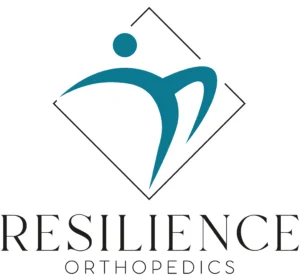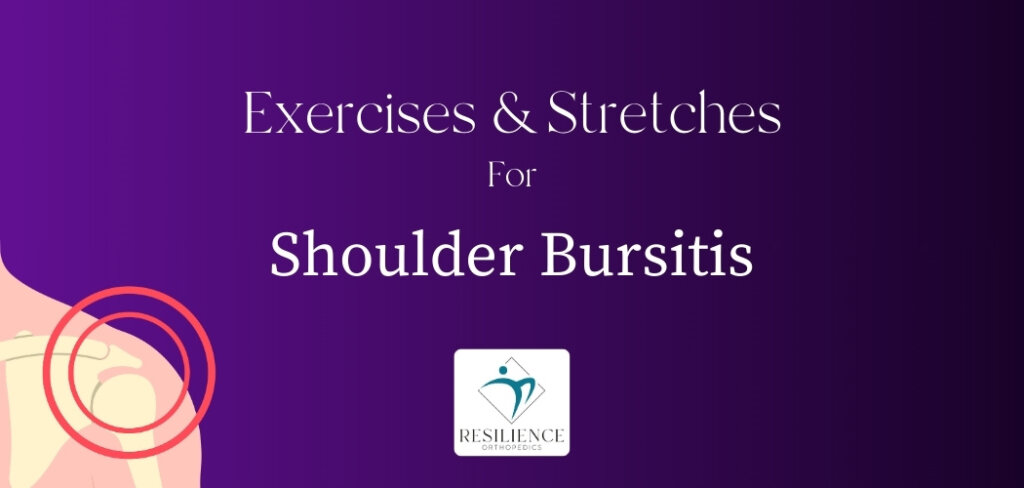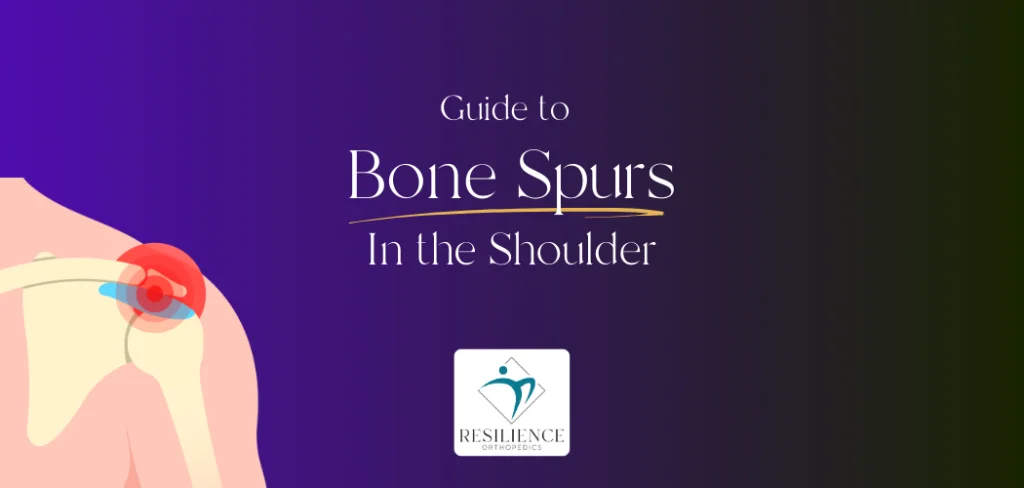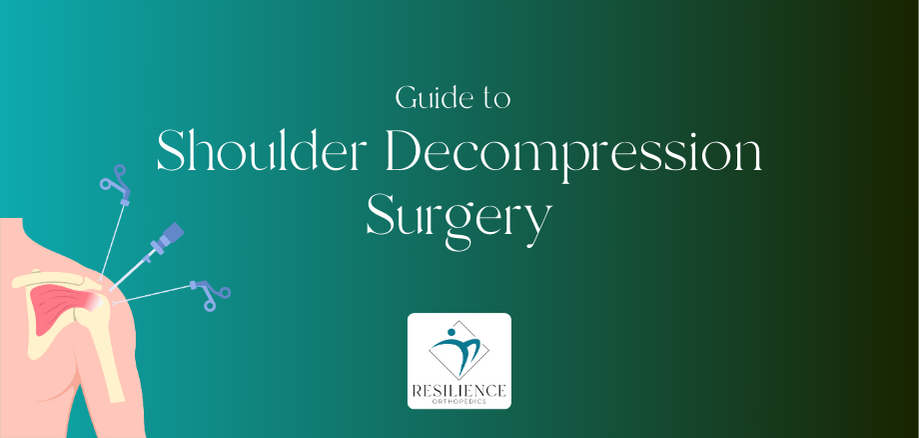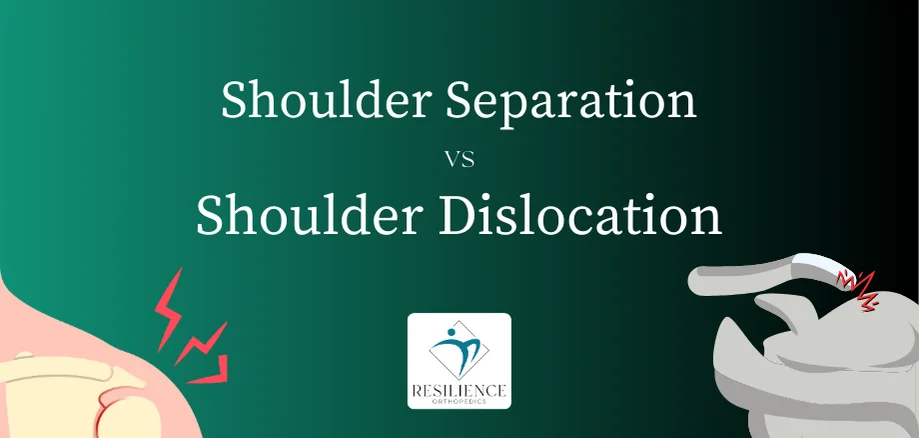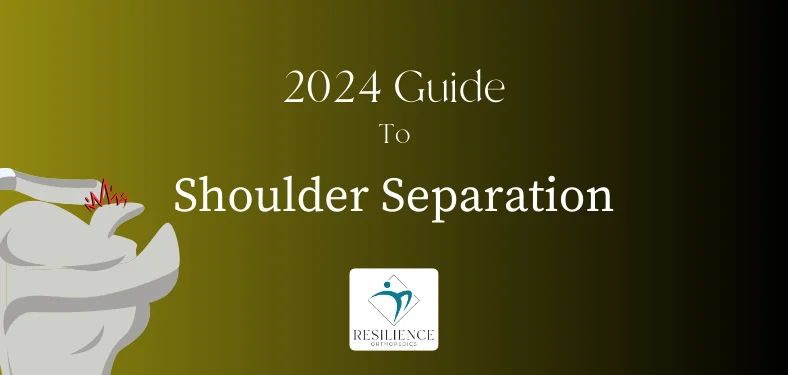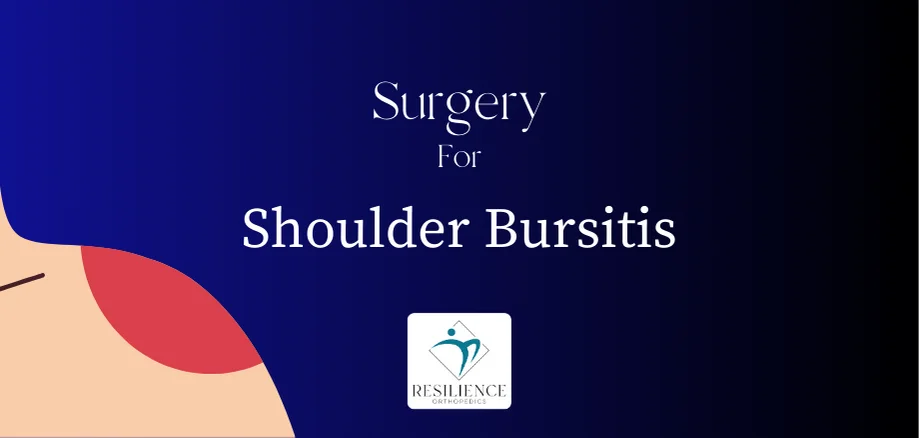Table of Contents
Shoulder bursitis is a common condition that causes shoulder pain and difficulty moving your arm. It can be caused by overuse, injury, or repetitive movements.
Exercises for shoulder bursitis can help to reduce pain, improve range of motion, and strengthen the muscles around the shoulder. These exercises should be done gently and gradually, and pushing yourself into painful stretches should be avoided.
In this article, we’ll go through the best stretches and exercises for shoulder bursitis, as well as exercises to avoid it.
These exercises should not be used without supervision from a shoulder surgeon or physical therapist.
Book a Consultation with Dr. Pamela Mehta, MD
The Best Orthopedic Surgeon in San Jose
Dr. Mehta is a board-certified orthopedic surgeon who can help you recover from your joint condition. If you:
- Are Suffering From Pain and Mobility Issues
- Need Orthopedic Assessment and Advice
- Want Treatment From a Top Orthopedic Doctor
We Can Help
What is Shoulder Bursitis?
Shoulder bursitis refers to inflammation of the bursae of the shoulder joint which are sacs filled with synovial fluid. These bursae usually reduce friction and cushion the bones, tendons, and muscles in the shoulder joint.
When there is too much friction bursae become irritated and inflamed, leading to bursitis. Skin, tendons, and ligaments would likewise wear out if there were no bursa between them and bony surfaces.
Shoulder bursitis (inflammation of a bursa) is one of the leading causes of shoulder pain. It can lead to taking time off work and, in some cases, inability to function in your daily activities.
8 Exercises for Shoulder Bursitis
When you first notice the signs of shoulder pain and inflammation, you should visit your local orthopedic surgeon. They will assess your shoulder joint and can provide information on what exercises you should start with.
The trick is to start with gentle exercises and stretches for shoulder bursitis as directed by your shoulder doctor, building these up over time. You should never push yourself to the point of worsening shoulder pain.
If you’re unsure, consult your doctor or a physical therapist before continuing with these exercises.
*If you have had shoulder surgery, please check with your orthopedic surgeon when you can start exercises*
1. Scapular Exercise – Wall Pushups
It is recommended to perform this exercise with your fingers slightly extended as opposed to straight up and down. Stand facing a wall, about 30 to 45 centimetres away. Put your hand’s shoulder height on the wall.
Bring your face to the wall while bending your elbows gradually. Straighten your back and hips.
Retrace your steps to where you began.
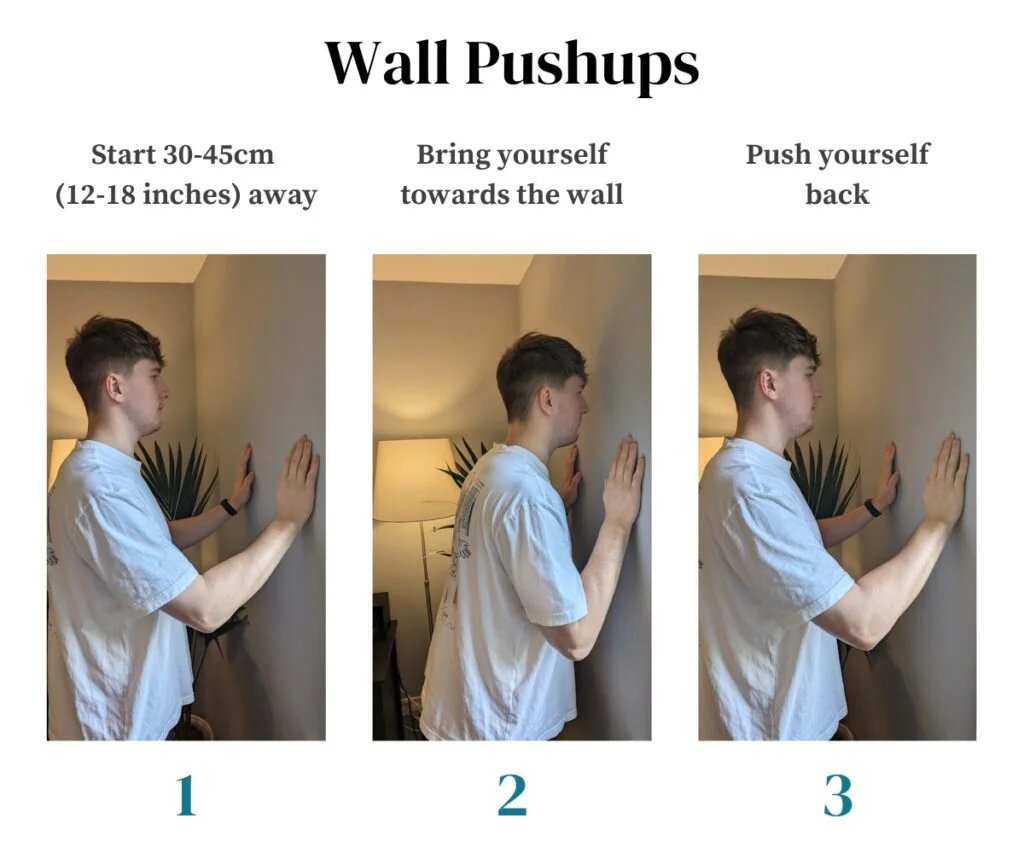
Repeat this 10 times, doing 3 sets of this throughout the day.
2. Posterior Stretching Exercise
Grasp the elbow of your injured arm with your other hand.
Pull your damaged arm carefully across your body with the aid of your hand. A little stretch will be felt over the affected shoulder’s back.
Hold for between 15 and 30 seconds, minimum.
Next, gradually lower your arm. Do this 2 to 4 times.
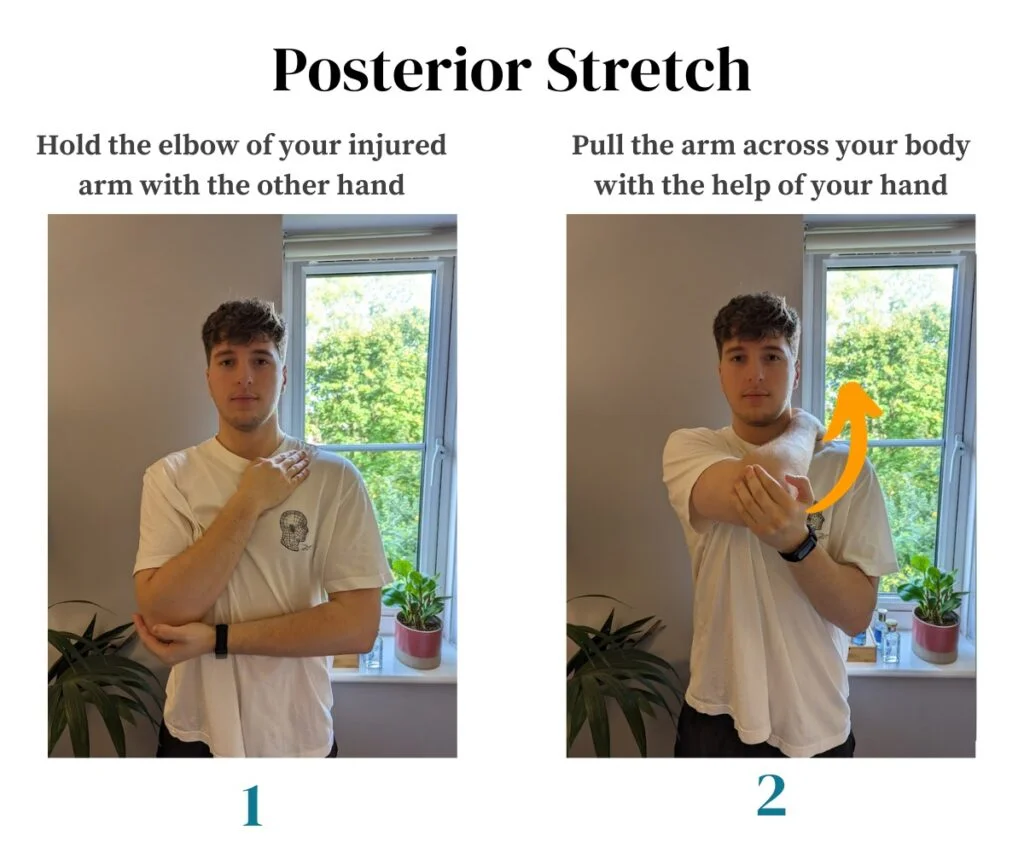
3. Behind-the-back Stretch (Internal Rotation)
You might need to hold off on performing this stretch until you’ve mostly regained your range of motion and strength, according to your shoulder surgeon or physical therapist.
This stretch can be performed in a variety of ways. Any of these shoulder stretches should be held for between 15 and 30 seconds, two to four times each.
Light Stretch
Put your hand in your back pocket. Let it rest there to stretch the shoulder.
Moderate Stretch
Hold your injured arm behind your back by the wrist with your other hand, palm facing outward.
To extend your shoulder, gently raise your arm.
Advanced Stretch
Use a cloth for this more difficult stretch
Place the afflicted arm’s hand behind your back.
Now hold the back end of the towel. With the other hand, hold the front end of the towel in front of your body.
Pull gently on the front end of the towel. This will bring your hand farther up your back to stretch your shoulder.
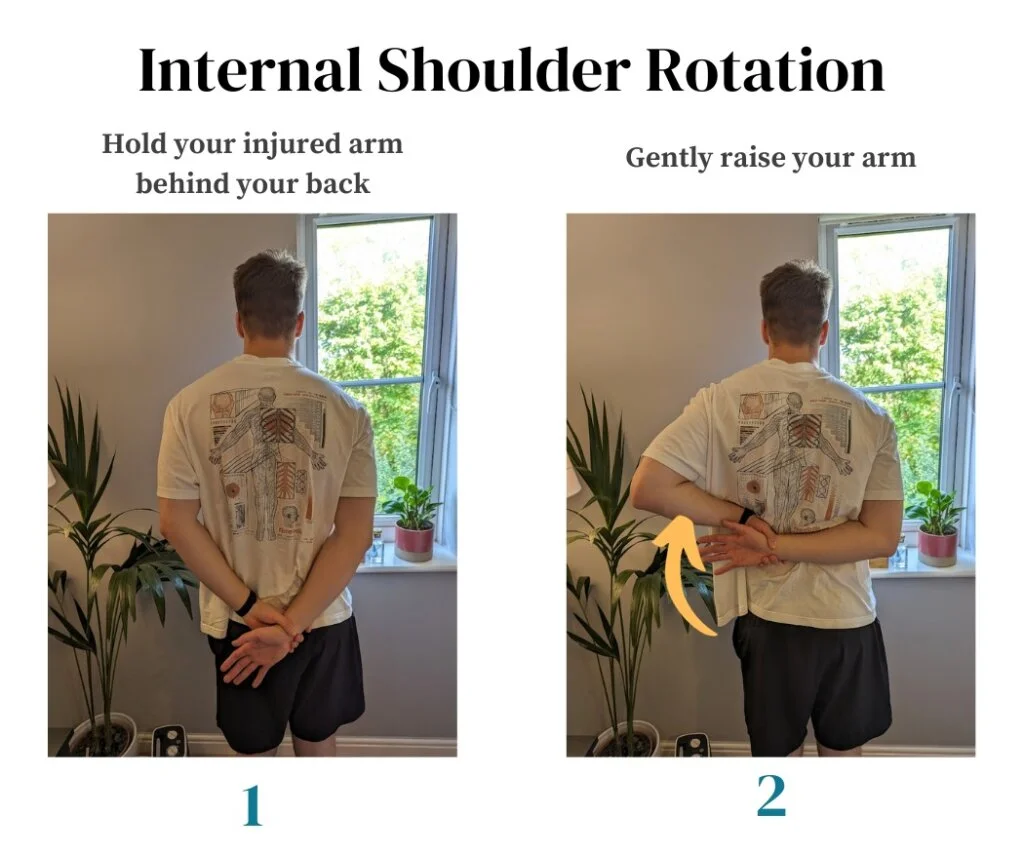
4. Overhead Stretch
Grab a solid surface from approximately an arm’s length away. A tabletop, a doorknob, or the back of a solid chair might all be used.
Bend forward with your legs slightly bent and your arms straight. Lower your upper body and extend your shoulders.
You may need to take a step or two backward as your shoulders stretch farther.
Maintain for at least 15 to 30 seconds. Then get up and stretch. Step forward if you stepped back throughout your stretch to keep your hands on the firm surface.
Repeat 2–4 times more.
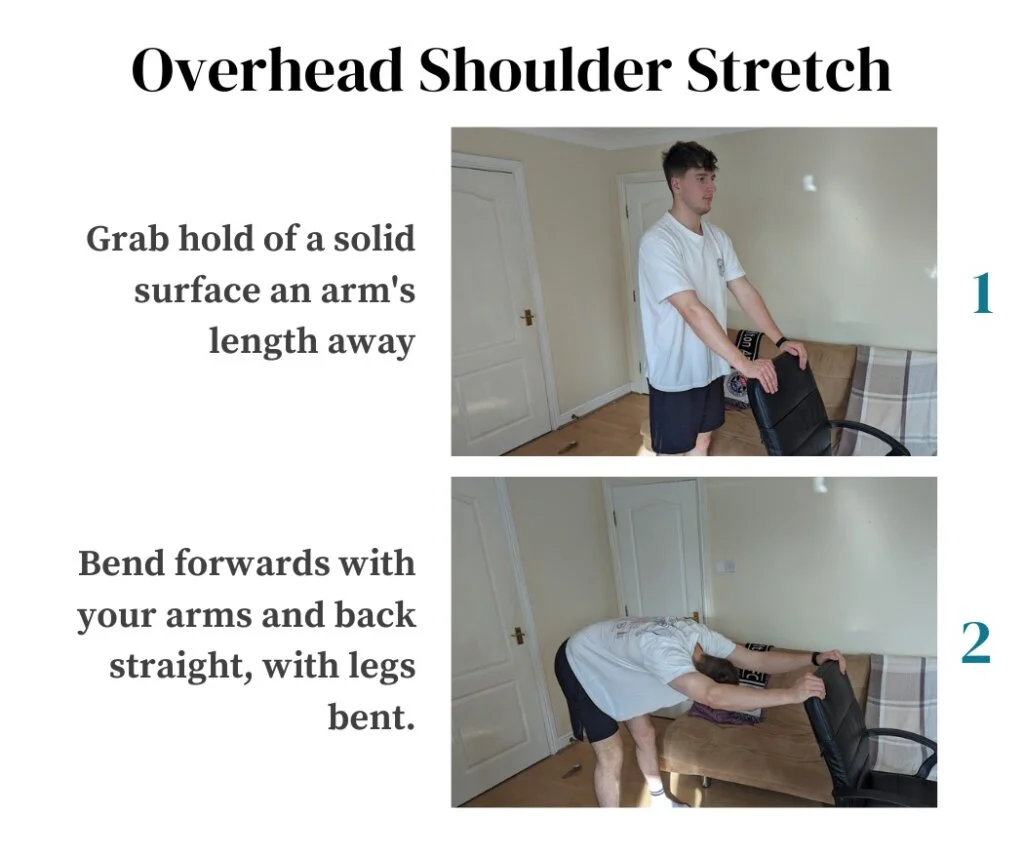
5. Shoulder External Rotation
To perform external rotation of your shoulder, start by taking something elastic, like an exercise band, in both of your hands.
Holding your elbows at your side, hold the exercise band out in front of you at waist height, so that your elbows are at a roughly 90-degree angle.
Gently pull the band apart, keeping your elbows stuck to your side, until you feel a gentle stretch in your arm.
Bring your hands back together slowly until you are back in the initial posture. This should be done ten times.
Finish this set of ten exercises three times during the day.
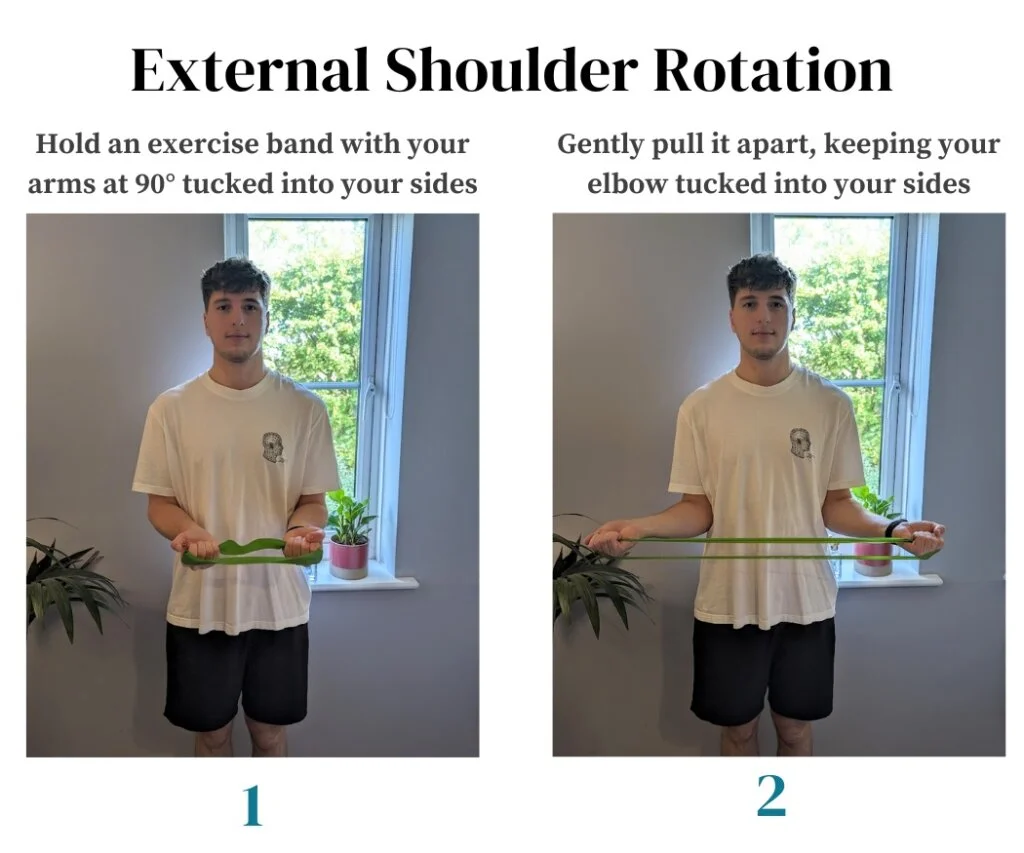
6. Scapular Exercise: Retraction
You will need elastic exercise material for this workout, such as surgical tubing or Thera-Band.
Put the band around a solid object at about waist level (A bedpost will work well).
Each hand should hold the end of the band.
Pull the band back with your elbows at your sides and bent to 90 degrees. Your shoulder blades should be moving in the same direction.
Then return your arms to where they began.
Repeat 8 to 12 times.
If you have a good range of motion in your shoulders, try this exercise with your arms lifted out to the sides. Keep your elbows at a 90-degree angle. Raise the elastic band to about shoulder level. Pull the band back to move your shoulder blades toward each other. Then move your arms back where you started.
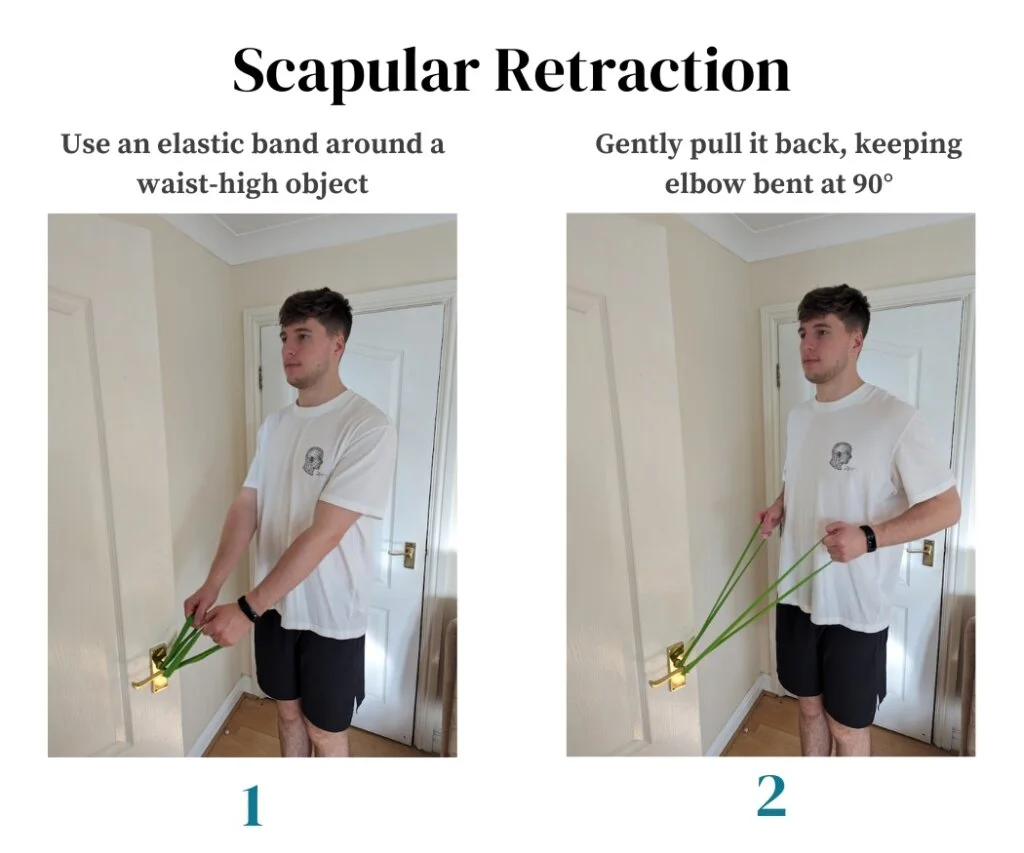
7. Shoulder blade Squeeze
Squeeze your shoulder blades together while standing with your arms at your sides.
As you squeeze, do not elevate your shoulders.
Hold 6 seconds.
Repeat 8 to 12 times.
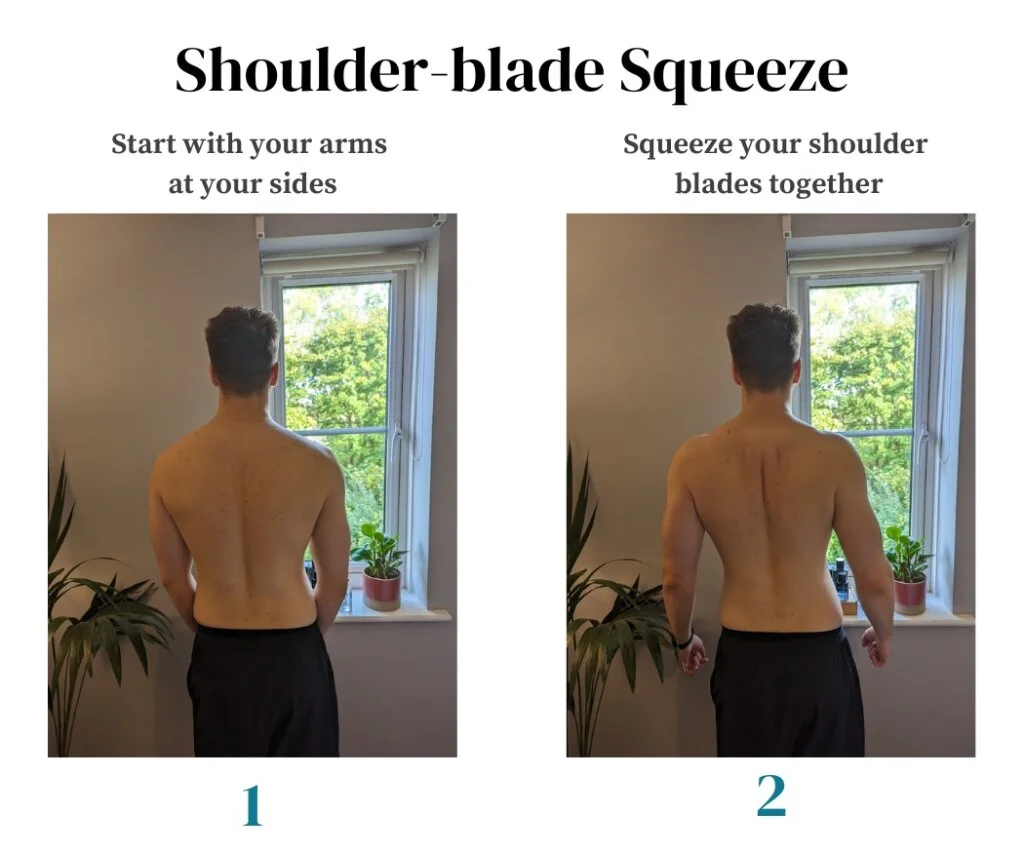
8. Internal Rotator Strengthening Exercise
Start by attaching an elastic workout material to a doorknob. Surgical tubing or Thera-Band can be used.
Standing or sitting, relax your shoulders and bend your elbow 90 degrees. Your upper arm should be relaxed against your side.
Hold one end of the elastic band in the hand of the painful arm. Slowly rotate your forearm toward your body until it touches your belly. Slowly move it back to where you started.
Keep your elbow and upper arm firmly tucked against the towel roll or at your side.
Repeat 8 to 12 times.
For added comfort, place a wrapped towel between your elbow and your torso. This will assist you in keeping your arm at your side.
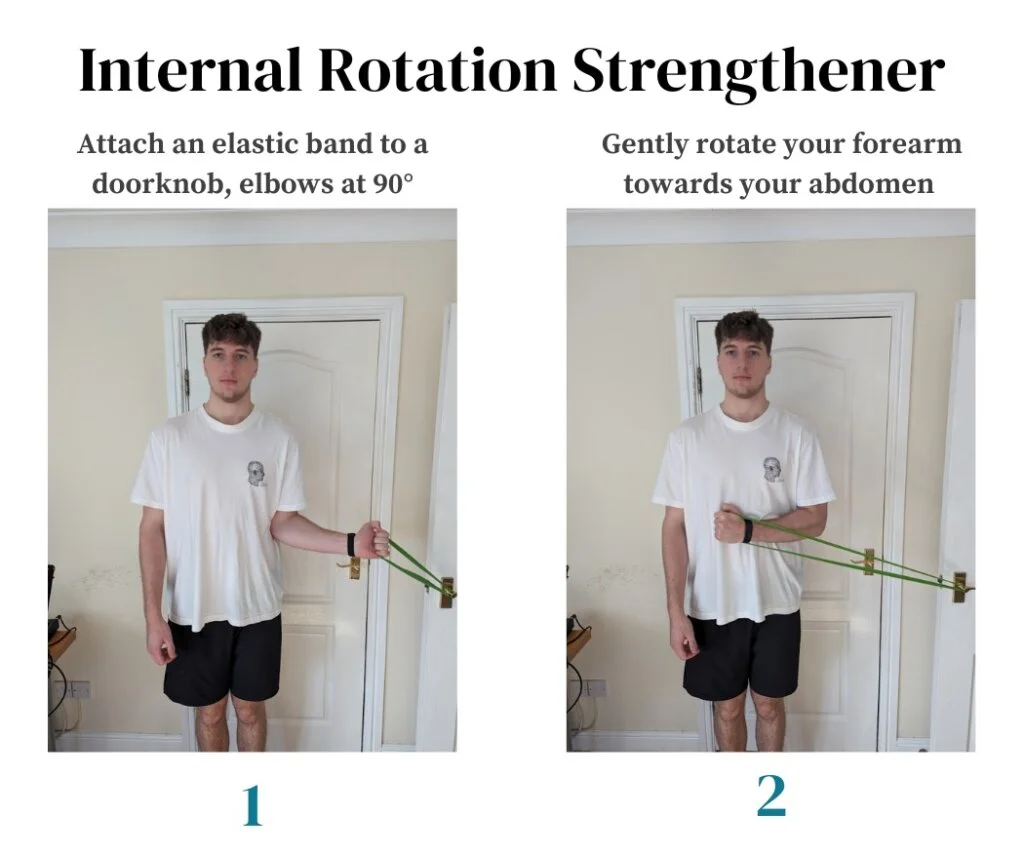
Exercises After Surgery for Shoulder Bursitis
Doctors typically recommend physical therapy as a key part of your recovery after shoulder bursitis surgery. If you have recently had shoulder surgery, physical therapy can help you maximize the results of your operation and get your shoulder working again.
Let’s take a look at some of the exercises that your physical therapist may show you after shoulder surgery, as your shoulder is ready and becomes stronger:
1. Shoulder-Forward Elevation
Put your hands together (cup your fingers together) and lift your arms above your head. For 10 to 20 seconds, maintain the elevation with your elbows as straight as possible.
After 10 to 20 seconds, slowly lower your arms in front of you. Increase the height of your hands above your head as you progress.
You can also do this activity by raising your arms upward with your fingertips pointing to the ceiling. Keep your elbows straight. Hold this position for 10 seconds, then lower your arms slowly in front of you.
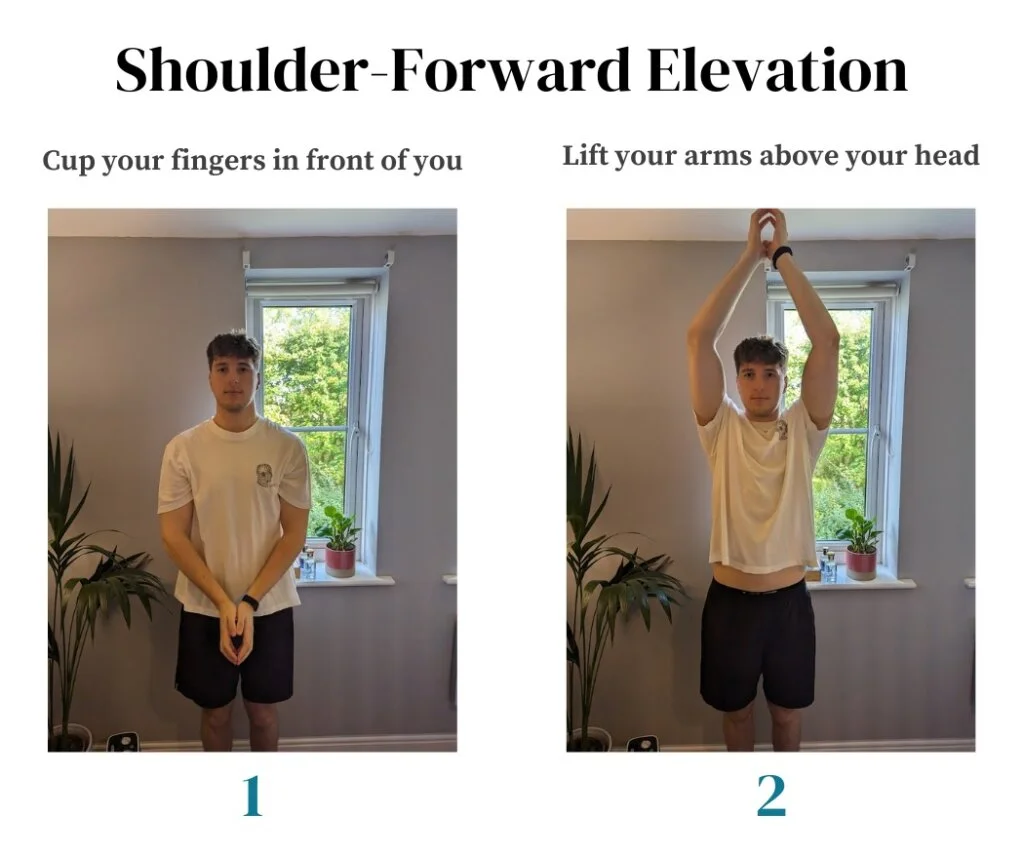
Repeat this up to 10 times, though ensure you don’t push yourself too hard or through pain.
2. Supported Shoulder Rotation
While sitting or standing, rotate the lower half of your arm (the forearm) so your hand is next to your waist on the opposite side of your body.
Keeping your forearm at the same height, slowly rotate it back and forth, so your hand is moving from one point to the other.
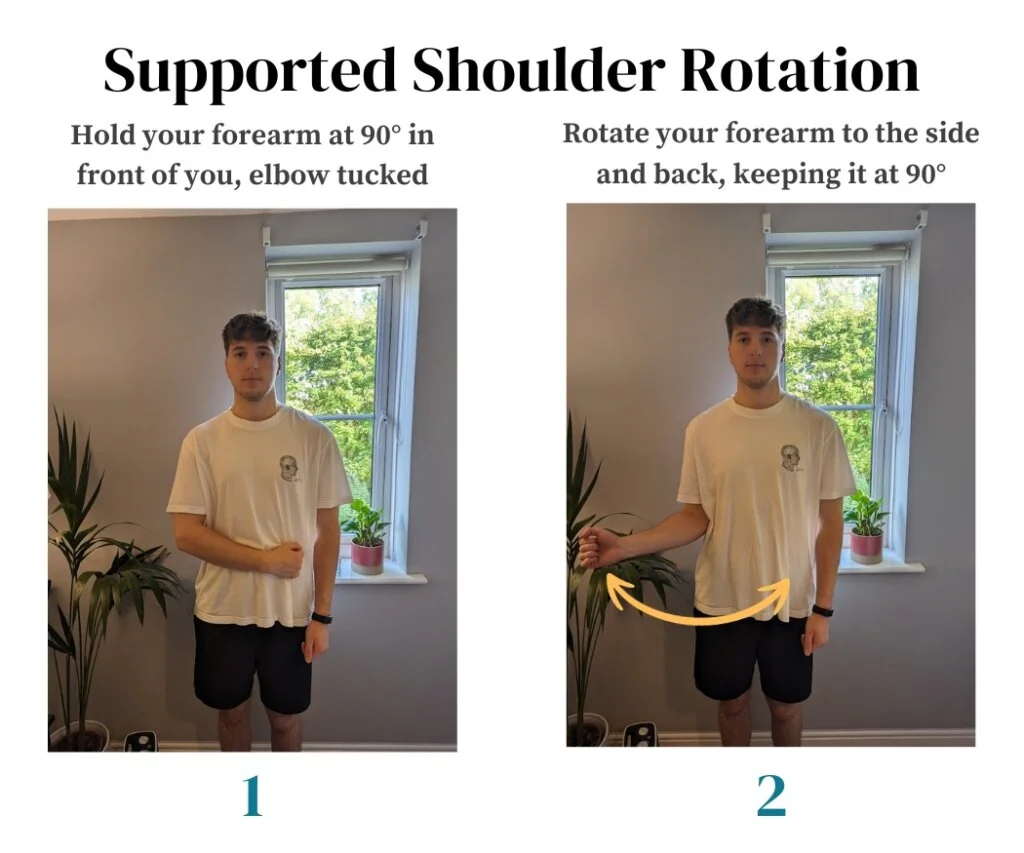
3. Walk-Up Exercise
Use your fingers on the affected arm to “crawl” up a wall as high up as possible.
Once you’ve reached your hand as high up as possible (and in a comfortable position), hold this position for 10 to 20 seconds.
Slowly crawl your fingers back down the wall.
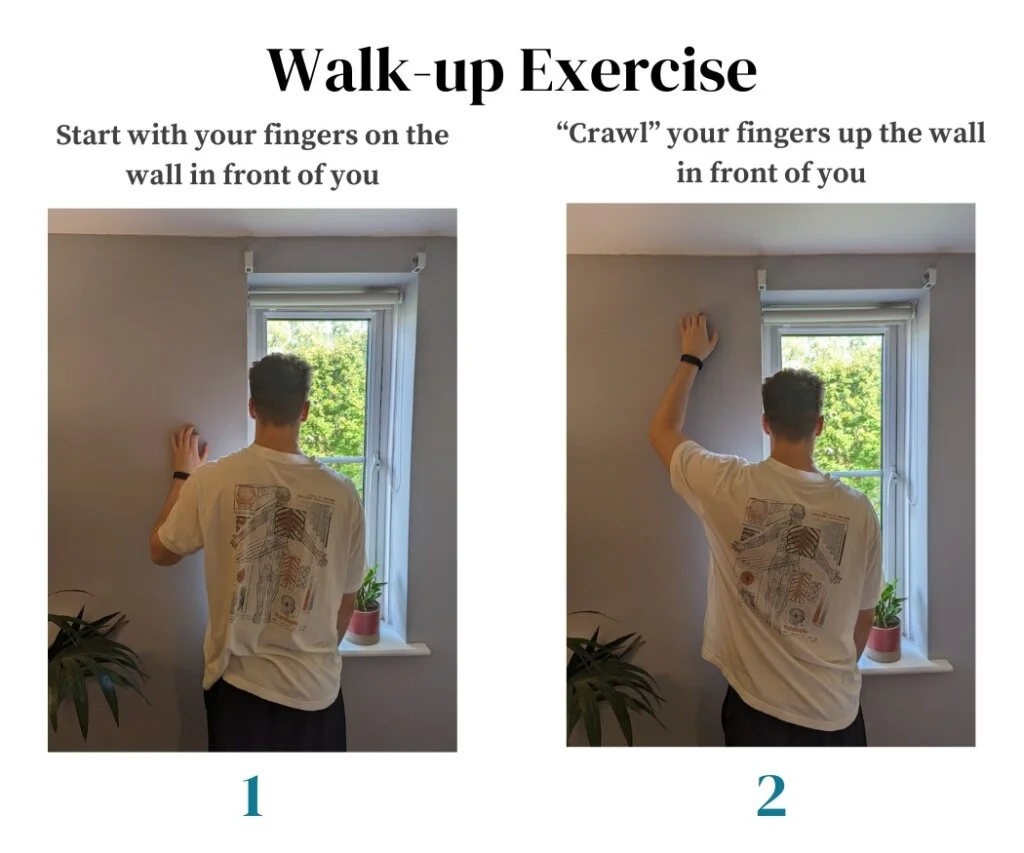
4. Shoulder Extension
Stand with your back against a wall.
Put your arms straight out at your sides, and place your hands on the wall.
Stay in this position for 5 seconds and then relax.
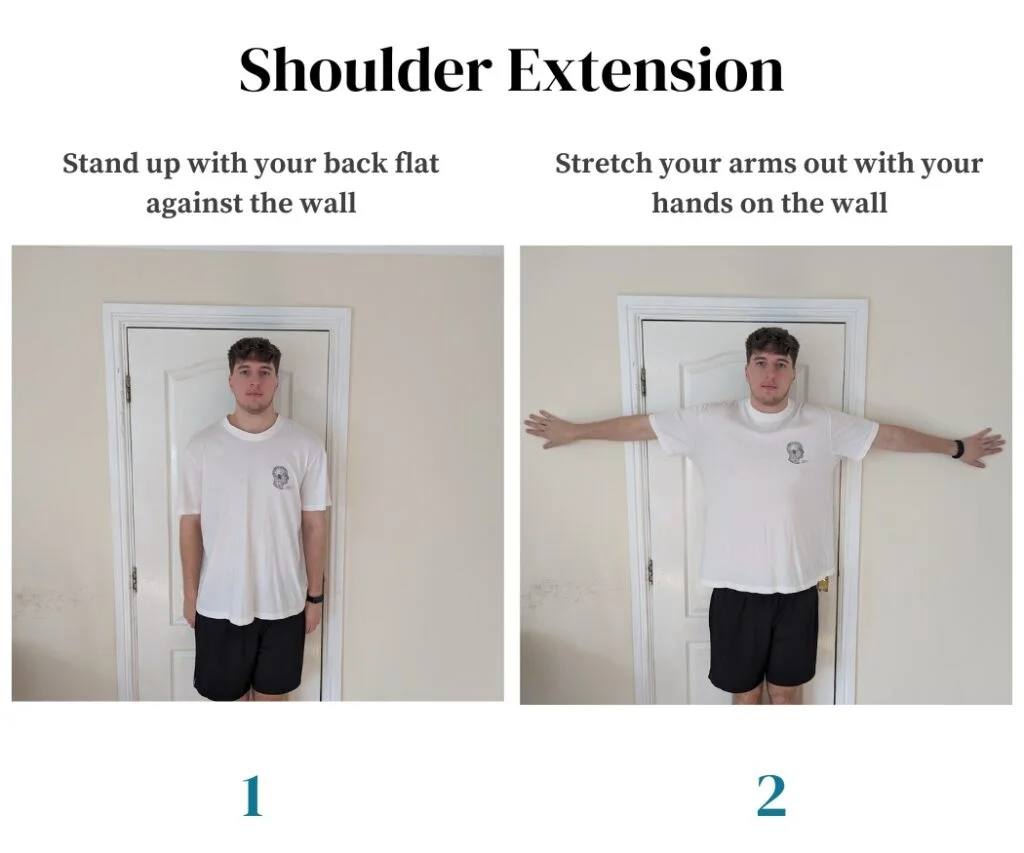
Exercises to Avoid if You Have Shoulder Bursitis
The movements you should be avoiding are dependent on what stage of recovery you are in and your fitness level.
Ultimately, your symptoms will dictate what you should and shouldn’t be doing.
Yet, some moves are more aggravating than others and can lead to a rotator cuff injury or tendinitis. These are the moves to keep in mind.
- Repetitive overhead reaching
- Overhead throwing
- Heavy lifting, particularly anything that strains the rotator cuff
- Arm exercises with the thumbs pointing down, such as an upright row, to prevent unnecessary shoulder impingement
- Triceps dips.
- Any movement that feels unstable or painful
Some people are at higher risk for shoulder bursitis because they use their shoulders more than others. Examples of those who are more prone to bursitis include:
- Carpenters
- Musicians
- Athletes
- Gardeners
These will have to avoid doing this work for at least a couple of months.
Exercises to Avoid After Shoulder Bursitis Surgery
Compared to other tissues in your body, tendon tissue recovers far more slowly. For instance, your skin will usually mend in seven to ten days if you cut yourself.
However, the tissue of the rotator cuff tendon recovers over the course of three months.
Depending on the severity of the rotator cuff rupture, it usually takes another two to three months to regain complete shoulder strength after a span of three months. Compared to other tissues in your body, tendon tissue recovers far more slowly.
For instance, your skin will usually heal in seven to ten days if you cut yourself. However, the tissue of the rotator cuff tendon recovers over the course of three months.
So after a period of 3 to 4 months, you can resume initial light exercises and then gradually and slowly shift onto the other ones.
You should not do any reaching, lifting, pushing, or pulling with your shoulder during the first six weeks after surgery.
